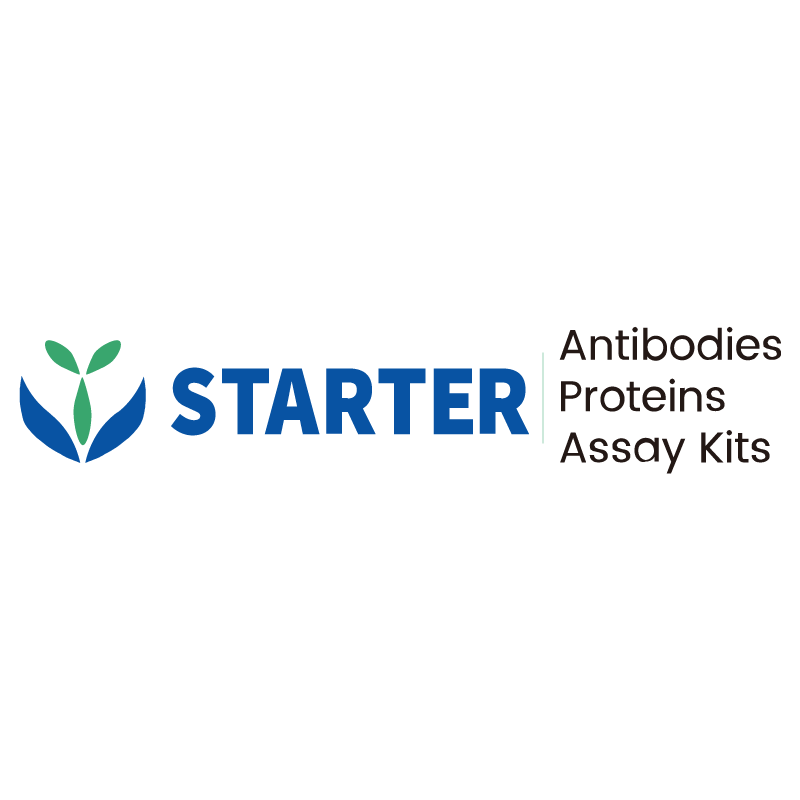WB result of ASC/TMS1 Rabbit pAb
Primary antibody: ASC/TMS1 Rabbit pAb at 1/1000 dilution
Lane 1: RAW264.7 whole cell lysate 20 µg
Lane 2: J774A.1 whole cell lysate 20 µg
Lane 3: mouse spleen lysate 20 µg
Negative control: RAW264.7 whole cell lysate
Secondary antibody: Goat Anti-rabbit IgG, (H+L), HRP conjugated at 1/10000 dilution
Predicted MW: 21 kDa
Observed MW: 22 kDa
Product Details
Product Details
Product Specification
| Host | Rabbit |
| Antigen | ASC/TMS1 |
| Synonyms | Apoptosis-associated speck-like protein containing a CARD; mASC; PYD and CARD domain-containing protein; Pycard |
| Immunogen | Recombinant Protein |
| Location | Cytoplasm, Nucleus, Mitochondrion, Endoplasmic reticulum |
| Accession | Q9EPB4 |
| Antibody Type | Polyclonal antibody |
| Isotype | IgG |
| Application | WB, IHC-P |
| Reactivity | Ms, Rt |
| Positive Sample | J774A.1, mouse spleen, rat spleen, rat colon |
| Purification | Immunogen Affinity |
| Concentration | 0.5 mg/ml |
| Conjugation | Unconjugated |
| Physical Appearance | Liquid |
| Storage Buffer | PBS, 40% Glycerol, 0.05% BSA, 0.03% Proclin 300 |
| Stability & Storage | 12 months from date of receipt / reconstitution, -20 °C as supplied |
Dilution
| application | dilution | species |
| WB | 1:1000 | Ms, Rt |
| IHC-P | 1:200 | Ms, Rt |
Background
The ASC protein, also known as apoptosis-associated speck-like protein containing a caspase recruitment domain (CARD), is a 22 kDa protein that serves as a central adaptor for inflammasome assembly. It is composed of two primary domains: the pyrin domain (PYD) and the caspase recruitment domain (CARD), which facilitate its role in immune signaling. ASC is crucial for the formation of the inflammasome complex, which is activated in response to pathogen-associated molecular patterns (PAMPs) or damage-associated molecular patterns (DAMPs). This activation leads to the recruitment and activation of pro-caspase-1, resulting in the maturation and release of pro-inflammatory cytokines such as interleukin-1β (IL-1β) and interleukin-18 (IL-18). The ASC protein is expressed in various immune and non-immune cells and plays a significant role in immune homeostasis and disease progression, including cancer, bacterial and viral infections, and inflammatory diseases.
Picture
Picture
Western Blot
WB result of ASC/TMS1 Rabbit pAb
Primary antibody: ASC/TMS1 Rabbit pAb at 1/1000 dilution
Lane 1: rat spleen lysate 20 µg
Lane 2: rat colon lysate 20 µg
Secondary antibody: Goat Anti-rabbit IgG, (H+L), HRP conjugated at 1/10000 dilution
Predicted MW: 21 kDa
Observed MW: 22 kDa
Immunohistochemistry
IHC shows positive staining in paraffin-embedded mouse cerebral cortex. Anti-ASC/TMS1 antibody was used at 1/200 dilution, followed by a HRP Polymer for Mouse & Rabbit IgG (ready to use). Counterstained with hematoxylin. Heat mediated antigen retrieval with Tris/EDTA buffer pH9.0 was performed before commencing with IHC staining protocol.
IHC shows positive staining in paraffin-embedded mouse colon. Anti-ASC/TMS1 antibody was used at 1/200 dilution, followed by a HRP Polymer for Mouse & Rabbit IgG (ready to use). Counterstained with hematoxylin. Heat mediated antigen retrieval with Tris/EDTA buffer pH9.0 was performed before commencing with IHC staining protocol.
IHC shows positive staining in paraffin-embedded mouse skeletal muscle (low expression). Anti-ASC/TMS1 antibody was used at 1/200 dilution, followed by a HRP Polymer for Mouse & Rabbit IgG (ready to use). Counterstained with hematoxylin. Heat mediated antigen retrieval with Tris/EDTA buffer pH9.0 was performed before commencing with IHC staining protocol.
IHC shows positive staining in paraffin-embedded mouse stomach. Anti-ASC/TMS1 antibody was used at 1/200 dilution, followed by a HRP Polymer for Mouse & Rabbit IgG (ready to use). Counterstained with hematoxylin. Heat mediated antigen retrieval with Tris/EDTA buffer pH9.0 was performed before commencing with IHC staining protocol.
IHC shows positive staining in paraffin-embedded rat colon. Anti-ASC/TMS1 antibody was used at 1/200 dilution, followed by a HRP Polymer for Mouse & Rabbit IgG (ready to use). Counterstained with hematoxylin. Heat mediated antigen retrieval with Tris/EDTA buffer pH9.0 was performed before commencing with IHC staining protocol.
IHC shows positive staining in paraffin-embedded rat spleen. Anti-ASC/TMS1 antibody was used at 1/200 dilution, followed by a HRP Polymer for Mouse & Rabbit IgG (ready to use). Counterstained with hematoxylin. Heat mediated antigen retrieval with Tris/EDTA buffer pH9.0 was performed before commencing with IHC staining protocol.
IHC shows positive staining in paraffin-embedded rat skeletal muscle (low expression). Anti-ASC/TMS1 antibody was used at 1/200 dilution, followed by a HRP Polymer for Mouse & Rabbit IgG (ready to use). Counterstained with hematoxylin. Heat mediated antigen retrieval with Tris/EDTA buffer pH9.0 was performed before commencing with IHC staining protocol.
IHC shows positive staining in paraffin-embedded mouse stomach. Anti-ASC/TMS1 antibody was used at 1/200 dilution, followed by a HRP Polymer for Mouse & Rabbit IgG (ready to use). Counterstained with hematoxylin. Heat mediated antigen retrieval with Tris/EDTA buffer pH9.0 was performed before commencing with IHC staining protocol.


